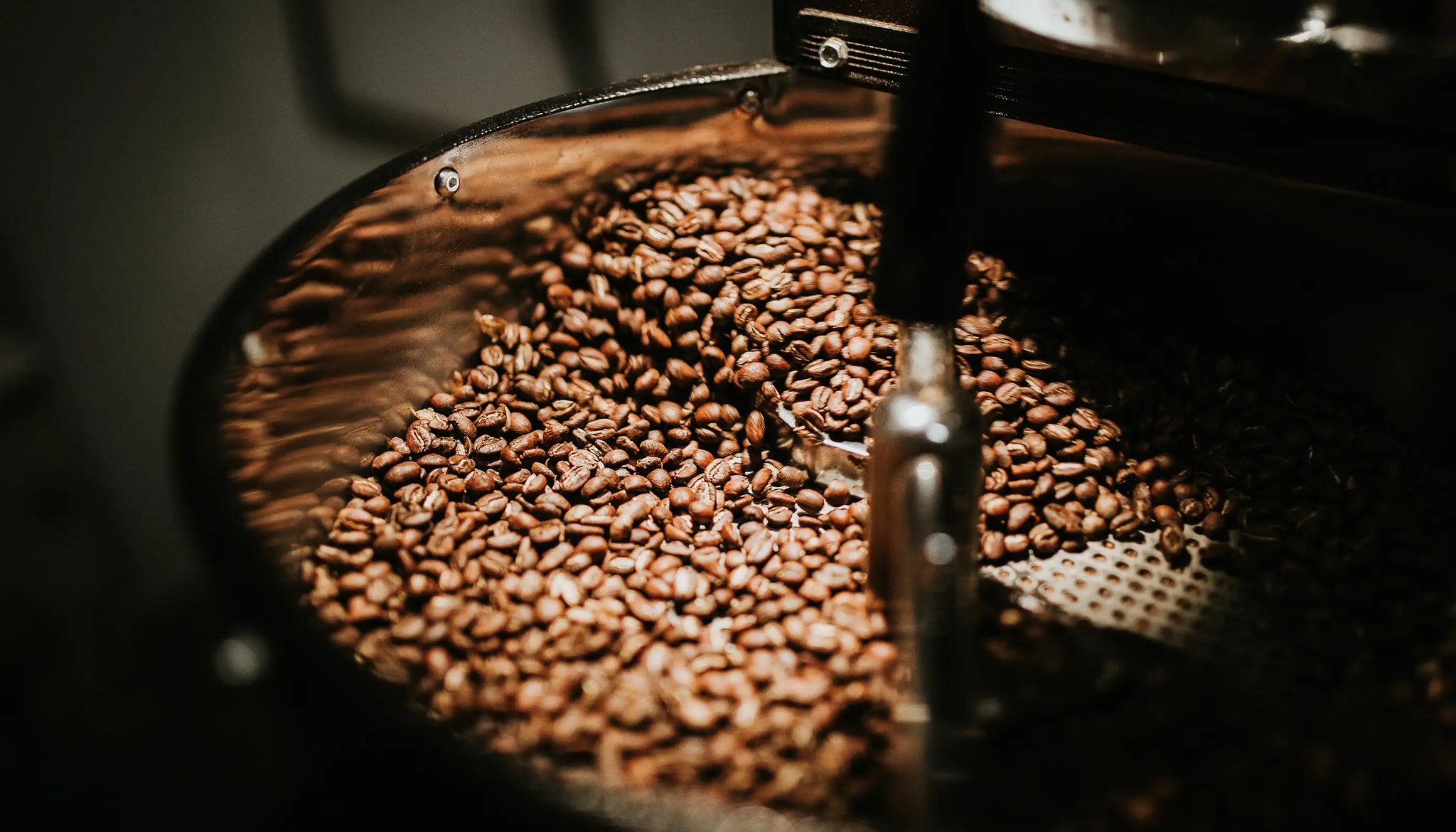Why SOE Single Origin Espresso Is Highly Rated Among Baristas
Why SOE Single Origin Espresso Is Highly Rated Among Baristas
Blog Article
Coffee Beans 101: Whatever You Need to Understand About Espresso and Blended Coffee Beans
When it comes to coffee, comprehending the nuances of coffee and mixed beans can change your daily mug. You'll discover the distinctive characteristics of Arabica and Robusta beans, and just how each impacts taste and caffeine material. From the expanding process to toasting techniques, every action contributes in your coffee experience. What makes the best mixture? Let's discover the necessary aspects that add to an exceptional mug of coffee.
Recognizing Coffee Beans: Kinds and Ranges
When diving into the globe of coffee, comprehending the types and selections of coffee beans is essential for every enthusiast. Arabica beans are understood for their smooth, complex flavors and lower high levels of caffeine web content, making them a favorite among coffee connoisseurs.
Ethiopian Yirgacheffe uses brilliant floral notes, while Colombian beans offer a well-balanced taste profile. By acquainting on your own with these beans and their tastes, you'll elevate your coffee experience and make more informed options in your developing trip.
The Expanding Refine: From Seed to Bean
When you explore the trip of coffee, everything begins with seed choice methods that establish the foundation for high quality. From there, farming and collecting play important duties in ensuring the beans flourish. Lastly, processing methods change those harvested cherries right into the coffee beans you love.
Seed Choice Techniques
Selecting the best seeds is crucial for generating top quality coffee beans, as it lays the foundation for the entire growing process. Pay attention to the seed's age and storage space problems, as fresh seeds tend to germinate far better. Consider the disease resistance of various varieties, as this can greatly influence your yield.
Farming and Harvesting
As you support your coffee seeds right into growing plants, understanding the farming and harvesting procedure is important for attaining the ideal taste and high quality. Start by growing your seeds in well-draining soil, preferably in a shaded area to shield them from direct sunlight.
When it comes time to harvest, search for ripe cherries, which normally turn a vivid red. Hand-picking is usually the very best technique to guarantee just the ripest cherries are selected. Timing is important; collecting also very early or as well late can influence the taste profile of your beans. Accept persistence and treatment, as this is where quality starts.

Processing Approaches Discussed
As soon as you've gathered your coffee cherries, the following important step is processing them to change those vibrant fruits into the beans you'll brew. There are two primary approaches: the dry process and the damp process. In the dry procedure, you spread out the cherries out in the sunlight to dry, enabling the fruit to ferment and pass on special flavors to the beans. On the various other hand, the damp procedure involves removing the fruit immediately and fermenting the beans in water, causing a cleaner preference. After handling, the beans are hulled, arranged, and typically dried once again. Each approach affects the flavor profile, so explore both can assist you discover your favorite mixture. Understanding these techniques is vital to enjoying your coffee experience.
Toasting Techniques: Exactly How Flavor Is Created
When it comes to toasting coffee beans, understanding roast degrees is essential to exposing their unique tastes. Each roasting technique effects the fragrance and improves the flavor development process, offering you a richer coffee experience. Allow's check out just how these factors come together to raise your day-to-day mixture.
Roast Levels Explained
Roast levels play a vital function fit the taste account of your coffee. You'll appreciate intense acidity and fruity notes when you choose a light roast. As you relocate to a medium roast, you'll see an equilibrium of sweet taste and intricacy, often highlighting delicious chocolate or sugar tastes. Dark roasts, on the various other hand, provide vibrant, smoky attributes with much less level of acidity, making them robust and rich. Each degree results from different roasting times and temperatures, affecting the beans' chemical make-up. By recognizing these degrees, you can much better pick a coffee that matches your taste choices. Try out various roasts to discover which one reverberates with you, improving your total coffee experience and enjoyment.
Influence On Fragrance
The roast level not only influences the preference of your coffee yet likewise greatly influences its fragrance. Each toasting method launches different unstable compounds, forming exactly how your coffee smells. Additionally, the freshness of the beans plays a critical duty; newly roasted coffee launches a lot more fragrant oils, boosting that tempting aroma.
Taste Growth Process
As you discover the flavor advancement process, you'll discover that roasting strategies play a critical duty in shaping the preference profile of your coffee. The roasting temperature level and time straight affect the acidity, sweet taste, and anger of the beans. Light roasts preserve more of the bean's initial tastes, highlighting fruity and flower notes. Tool roasts equilibrium level of acidity and body, providing a well-rounded flavor. Dark roasts, on the other hand, highlight bold, smoky attributes while reducing the bean's inherent high qualities. Throughout roasting, chemical responses, like the Maillard response and caramelization, change the beans and boost their complexity. Explore various roasting levels can aid you discover your best brew, so don't be reluctant to taste and uncover the abundant spectrum of tastes!
Coffee vs. Blended Coffee: Secret Distinctions
Coffee and mixed coffee each deal unique experiences that satisfy various tastes and preferences. Espresso is a concentrated coffee brewed forcibly warm water through finely-ground coffee beans, resulting in an abundant, vibrant taste and a creamy layer of crema on the top. It's usually enjoyed as a shot or utilized as a base for drinks like cappuccinos and lattes.
On the other hand, blended coffee combines numerous beans from various regions, producing a much more balanced taste profile. You'll frequently discover blends that highlight sweetness, acidity, or body, making them versatile for different developing techniques. While coffee concentrates on strength, mixed coffee may use a broader series of tastes that can change with each sip.
Inevitably, your selection in between espresso and combined coffee come down to your personal choice. Whether you crave a leisurely mug or a quick shock, both options have something tasty to offer.

Developing Methods: Opening the Perfect Mug
When it pertains to developing coffee, finding the right technique can transform your experience and boost your mug. Each developing strategy has its special charm and can considerably affect your coffee's taste and aroma. Using a French press enables you to delight in a full-bodied and abundant mixture, while a pour-over method offers a clean, bright cup with distinct tastes.
If you choose coffee, investing in a top quality equipment can aid you grasp the art of pulling shots. For convenience, a single-serve pod system uses rate without giving up taste.
Do not forget cool brew, which supplies a smooth, advice less acidic coffee perfect for hot days. Try out various methods to find what resonates with your taste buds. Each developing technique opens a brand-new globe of opportunities, so take the time to explore and find your ideal mug. Pleased brewing!
Tasting Notes: Recognizing Taste Profiles
How can you really appreciate your coffee if you do not recognize what flavors to seek? Tasting notes are your guide to recognizing the complex globe of coffee. Pay interest to the first flavors that hit your taste when you sip. You may discover fruity notes, like berry or citrus, or perhaps a nutty touch. As you continue to taste, see exactly how the flavors develop-- this is known as the "coating." Some coffees could leave a chocolatey or sugar aftertaste, while others may have a brilliant, tidy finish.
Consider the body of the coffee, also; is it ventilated and light or thick and syrupy? Do not forget acidity; a bright level of acidity can add life, while a reduced acidity may give a smoother experience. By determining these flavor accounts, you'll deepen your link with each mug, making coffee tasting a wonderful trip of exploration.

Tips for Picking and Storage Coffee Beans
Choosing and keeping coffee beans appropriately can greatly boost your developing experience. Start by choosing top notch beans that match your preference. Try to find quality; beans baked within the last 2 weeks are ideal. Examine the roast date on the product packaging, and purchase from neighborhood shops or trustworthy roasters.
When you have your beans, save them in an airtight container to stop exposure to moisture, light, and air. A dark, cool location functions best, so stay clear of maintaining them in the refrigerator or freezer, as this can introduce moisture. Only grind the quantity you need to maintain freshness; whole beans maintain flavor longer than pre-ground coffee.
Finally, attempt to utilize your beans within two to 4 weeks after opening for peak taste. Adhering to these ideas will certainly assure your coffee stays tasty and pleasurable, boosting your day-to-day mixture to new elevations.
Regularly Asked Questions
The Length Of Time Do Coffee Beans Stay Fresh After Roasting?
Coffee beans remain fresh for regarding two why not try here weeks after roasting - SOE. You must save them in an impermeable container, away from light and dampness. After that, their taste and aroma start to diminish considerably

Can I Mix Different Coffee Bean Varieties?
Definitely, you can mix different coffee bean varieties! Trying out blends can improve tastes and create a distinct preference account. Simply ensure to stabilize the staminas and features of each range for the very best results.
What Is the Ideal Work Dimension for Coffee?
For espresso, you'll desire a fine grind dimension, concerning the structure of table salt. This permits excellent removal, resulting in a rich, savory shot. Experiment a bit to find what matches your preference best!
Exactly How Does Altitude Affect Coffee Bean Flavor?
Elevation impacts coffee bean flavor by influencing the development rate and chemical make-up. Higher elevations lead to slower maturation, which boosts level of acidity and intricacy, giving your coffee a unique and vibrant preference you will not forget.
Exist Decaffeinated Versions of Espresso Beans?
Yes, there are decaffeinated versions of coffee beans. You can appreciate an abundant espresso taste without the high levels of caffeine kick. Just try to find "decaf" blends at your local coffee shop or specialized shop.
Coffee Beans 101: Whatever You Required to Know Regarding Coffee and Blended Coffee Beans.
When diving into the world of coffee, recognizing the types and ranges of coffee beans is vital for every lover.When it comes to roasting coffee beans, understanding roast levels is crucial to revealing their unique flavors. Coffee is a concentrated coffee made by go to website forcing warm water through finely-ground coffee beans, resulting in an abundant, bold flavor and a creamy layer of crema on top.On the other hand, combined coffee incorporates numerous beans from different regions, developing a more well balanced taste profile.
Report this page